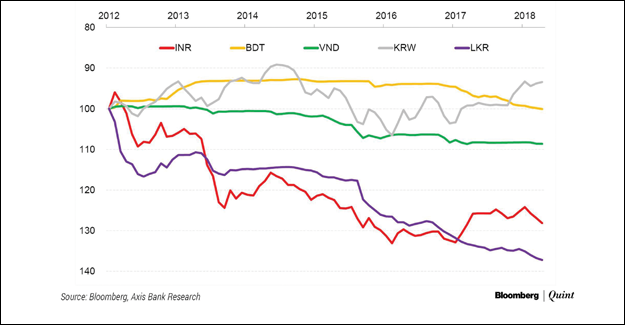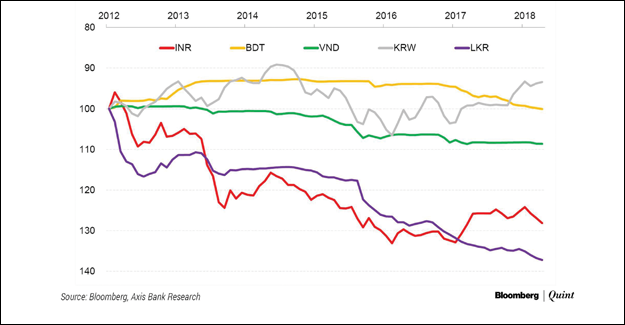
Does Currency Really Impact Exports: A Study Of The Textile Sector
The recent weakness in the Indian rupee has been seen as positive by those who fear that an overvalued currency has made India's exports uncompetitive. The Indian currency has weakened by about 7% since the start of the year. Recent comments from policy makers suggest that a weaker currency will help rather than hurt the Indian economy.
While most economists agree with that view, Axis Bank, in a recent research report, argues that there is no conclusive evidence that exports have been hurt by a strong currency or that a weaker currency will benefit exports. "Global comparisons suggest that effects of trade drive currency rather than vice versa," wrote Saugata Bhattacharya, chief economist at Axis Bank in the report.
A case study of the textile sector
Textiles continues to make up a significant constituent of India's exports, accounting for US$ 40 billion of a total of US$ 220 billion. Overall, the textile export industry has been stagnating since 2014, having seen contraction in annual growth. However, data released by the US Office of Textiles and Apparel on Indian textile imports, reveals that India has actually not been losing ground to emerging economies, said Axis Bank in its report. India has seen a rise in textile exports to the US, albeit a gradual one, while Vietnam's share has risen most significantly. This performance in textile shipments has little direct correlation with the performance of the currency over this period, said Bhattacharya.
Relative to the countries used for the study, India has been one of the major depreciating currencies since 2012. Only the Sri Lankan Rupee has underperformed the Indian Rupee. The Bangladesh Taka has remained strong, as has the Korean Won. The Vietnam Dong has seen intermediate strength and weakness.
Compared to the export outcomes, the inescapable conclusion is that the role of currencies in exports is quite weak. Conventionally, theory dictates that when a currency depreciates, exports become cheaper and imports become more expensive. Demand for exports responds to the depreciation by rising and current account deficit improves. However, Axis Bank's research across countries suggests that no causal relationship exists between a weakening currency and exports. It gives instances of China where the currency has appreciated on the back of strong export growth from 2011 to 2015. The appreciation has not dented the country's standing as an export powerhouse. In contrast, despite South African Rand's depreciation since 2010, the country's share of trade remains steady. The report by Axis Bank further reiterates the importance of exports for India to grow at 8% annually. While conventional knowledge dictates that a depreciating rupee is likely to boost exports, current evidence fails to support the same.

Textile Excellence
If you wish to Subscribe to Textile Excellence Print Edition, kindly fill in the below form and we shall get back to you with details.








